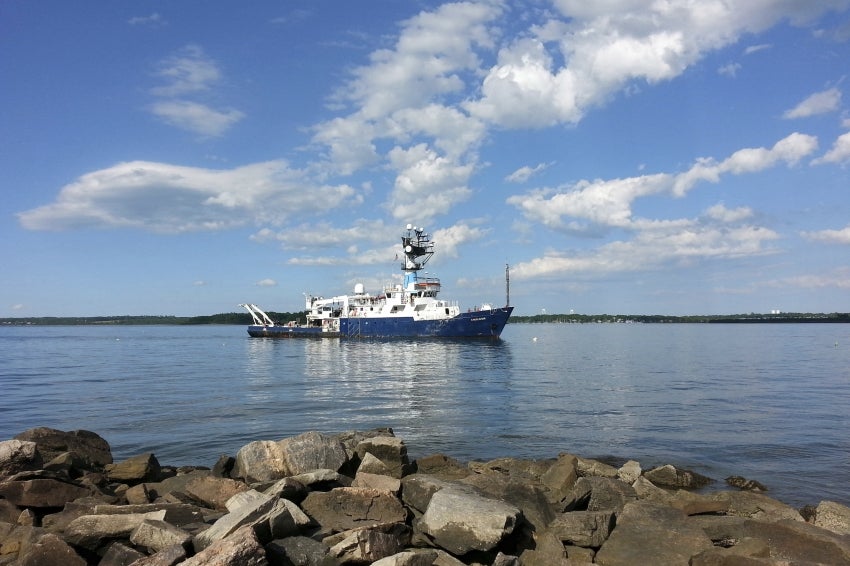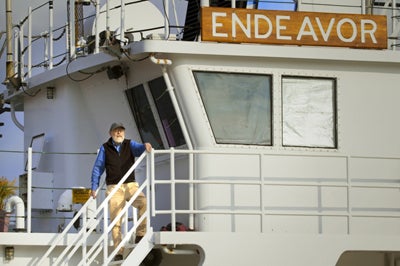From the Chronicle of Higher Education:
For months after the world’s largest accidental marine oil spill killed 11 workers and spawned illnesses and economic stress around the Gulf of Mexico, scientists couldn’t answer basic questions about the disaster.
How much oil was pouring from the Deepwater Horizon rig? Where was it going? How long would it poison people, jobs, and communities? Among the many obstacles to answering such questions back in 2010, according to university researchers, was a simple lack of vessels to get out and explore.
The scientific delay, said Christopher F. D’Elia, a professor and dean of the College of the Coast and Environment at Louisiana State University, was “like a forensic analysis where the body wasn’t discovered for five years, and it’s after all the jackals have eaten all the flesh off the bone.”
Votes expected in the coming weeks in Congress could decide whether that problem will get fixed. The Obama administration has proposed spending $106 million to start building two new state-of-the-art vessels for the nation’s existing academic research fleet. The Senate has proposed adding a third, for another $53 million, while the House of Representatives wants none.
The replacements are described by their advocates as badly needed for both student training and research, given the age and obsolescence of the 19-ship fleet now serving about 60 academic institutions and national laboratories.
And the proposed new ships would represent such an upgrade in technology and capabilities as to reduce the overall number of vessels needed to do the same amount of science, said Richard W. Murray, director of the Division of Ocean Sciences at the National Science Foundation, which helps manage the fleet.
“The outcome is going to be lovely — assuming that there is an outcome,” said Mr. Murray, a professor of earth and the environment at Boston University, looking ahead to the budget votes expected after Congress returns next month for a post-election session.
Ships used for academic research, and their operating costs, have been shared and coordinated for the past 45 years by the University-National Oceanographic Laboratory System, or UNOLS. Most of the UNOLS ships are owned by the NSF or the Navy, with others belonging to individual institutions.
The ships are critical for students and researchers studying a variety of scientific challenges such as rates of sea-level change, monitoring the health of marine food supplies, forecasting earthquakes, and understanding the origins of life. And they’re under heavy demand, running at an average of 97 percent of capacity, Mr. Murray said.
But stresses on the fleet in recent years include cuts to the Pentagon budget, which have left the Navy increasingly challenged to fill its traditional role in assisting academic research.
The shortfall was especially in evidence after the 2010 Gulf of Mexico oil spill, Mr. D’Elia said. Various factors slowed the scientific response to the spill, led by uncertainty over how much responsibility the rig’s British operator, BP, would accept. But an additional problem was the availability of ships to carry researchers, which in turn slowed the delivery of aid to affected communities and toughened the job of assigning financial responsibilities, Mr. D’Elia said.
An Aging Fleet
The debate in Congress over the number of new ships is especially important to universities in the Gulf region, said Craig R. McClain, executive director of the Louisiana Universities Marine Consortium, which owns the Pelican, a 31-year-old member of the UNOLS fleet.
Ships generally are retired around age 40, and both of those now in the Gulf, the Pelican and the Point Sur, will be beyond that age by the time the new ships can be built and brought on line. And if Congress approves only two new ships, they most likely would be stationed at universities along the main Atlantic and Pacific coasts.
Sharing a ship between the Atlantic seaboard and the Gulf is possible, though the transfer around Florida would add four to seven days per trip, said one experienced ocean researcher, Wilford D. Gardner, a professor of geosciences at Texas A&M University.
The idea of a third ship was raised during a just-completed review of ocean-research needs led by the National Academies. Although the Obama administration ultimately requested two ships, in the face of budget constraints and political challenges, the NSF recognizes the improved efficiencies of having a third vessel, Mr. Murray said.
Covering operating costs for a third ship would be no problem, Mr. Murray said. Those costs are included in grant awards from the NSF and other federal agencies, and there’s no lack of valuable projects deserving support, he said. If Congress does not buy a new ship dedicated to the Gulf, local universities very likely will have to finance construction — at a cost of $30 million to $90 million — through donations and state support, Mr. McClain said.grant
The National Academies recommendation does envision a gradual decline in the overall number of ships, though with a corresponding increase in capabilities. The proposed new ships would have technologies that include the ability to automatically hold a position in the open ocean.
That alone could shave hours off missions in which operating costs for crews and equipment can run tens of thousands of dollars a day. Bruce H. Corliss, dean of the Graduate School of Oceanography at the University of Rhode Island, remembers spending hours aboard a ship off Cape Hatteras working to get a sample of sediment from the ocean floor because the boat was being pushed by steady currents.
The newer boats, built to a design overseen by Oregon State University, also will include advanced communications systems to better enable remote observations, Mr. Murray said.
Still, the hands-on experience is critical even in an internet-enabled era. One reason, Mr. D’Elia said, is the need to calibrate remote sensors with direct observations of ocean conditions.
Another, Mr. Gardner said, is the value of teaching students how to handle real-life challenges in the field. He recalled taking a graduate student to Africa years ago and facing a customs inspector in Ivory Coast who wanted to charge the student $100 to bring along some polycarbonate filters used to measure sediment and particles in the water. The student talked the inspector down to just $40, Mr. Gardner recalled proudly.
For the bargaining in Congress, universities have some important allies. They include a powerful Gulf state lawmaker, Sen. Thad Cochran of Mississippi, a Republican who serves as chairman of the Senate Appropriations Committee and backs the idea of the third ship.
But on the House side, where the Republican majority has often been more critical of scientific discovery, the chairman of the House appropriations subcommittee responsible for the NSF, Rep. John Culberson of Texas, has questioned the need for any new ships.
Mr. Murray and representatives of several universities with marine programs said that skepticism doesn’t reflect the reality found through the decadelong review led by the National Academies. Especially after the 2010 oil spill, the demand for research vessels is strong among university researchers, government agencies, and even private users, said William M. Graham, a professor and director of the School of Ocean Science and Technology at University of Southern Mississippi. The National Academies suggested that the NSF should review the need for new vessels every three to five years.
The looming retirement of the Pelican and the Point Sur will make the capacity shortfall identified in last year’s National Academies report even worse, Mr. Graham said. “We don’t have the luxury of time to restart this process.”

Paul Basken covers university research and its intersection with government policy. He can be found on Twitter @pbasken, or reached by email at paul.basken@chronicle.com.
Photo by Alex DeCiccio

